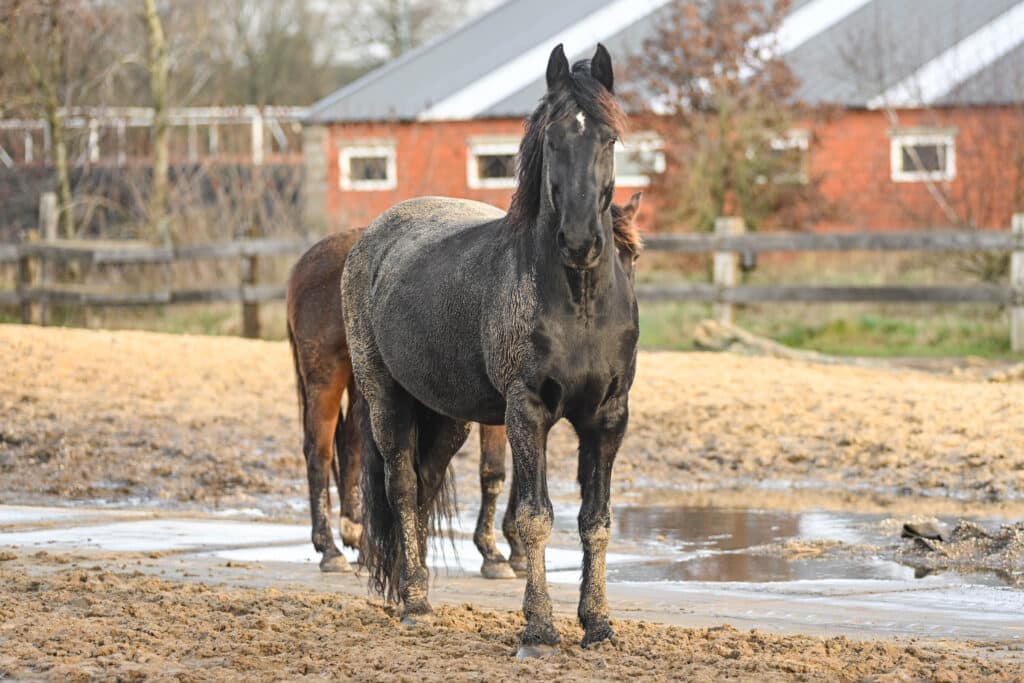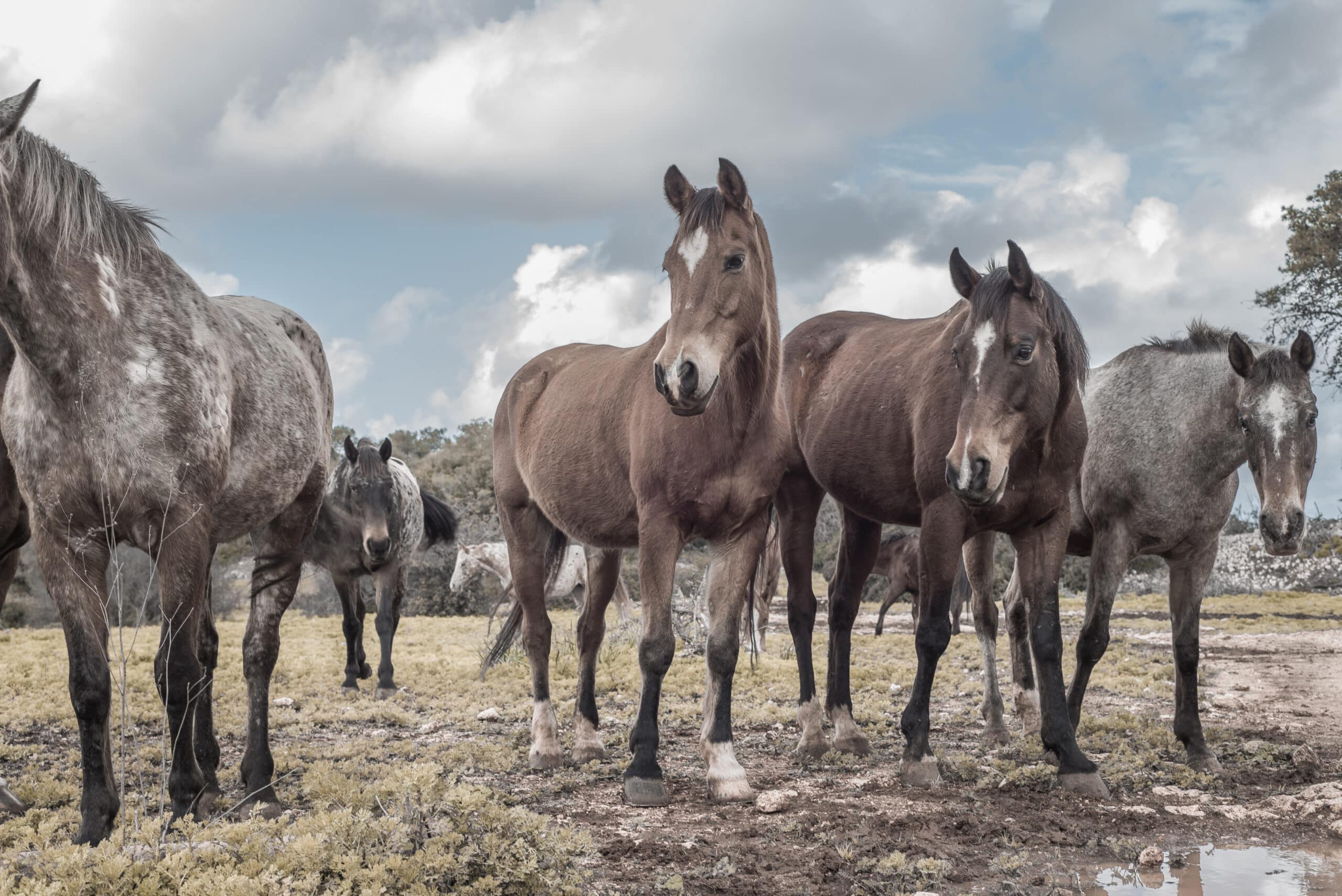4 Proven Horse Paddock Mud Control Strategies
Mud season is one of the toughest times of the year for horse owners, and horse paddock mud control can feel overwhelming. The combination of rain, melting snow, and heavy turnout traffic can quickly turn paddocks into a mess. Beyond being inconvenient, mud can damage your horse’s hooves, compromise tack, and create unsafe conditions in the barnyard. That’s why having a plan for horse paddock mud control is so important. With a few proactive strategies, you can minimize the mess and keep both your horse and your equipment in good condition.

Protecting Hoof Health in Muddy Conditions
The number one concern with muddy paddocks is hoof health. Prolonged exposure to wet, unsanitary conditions can soften hooves and create the perfect environment for thrush, a bacterial infection that can be painful and difficult to manage.
To prevent thrush during mud season:
- Pick hooves daily: Remove packed mud and debris before it has a chance to trap moisture.
- Apply topical treatments: Thrush prevention solutions can help keep bacteria at bay.
- Provide dry areas: Create gravel pads or use mats near gates, water troughs, and high traffic areas to give horses relief from constant wet footing.
Consistency is key with horse paddock mud control methods. Even small daily efforts go a long way toward protecting your horse’s hooves. To see our current selection of hoof care products, click here!

Tack Care in Wet, Muddy Weather
Mud doesn’t stop at the paddock – it finds its way onto tack, boots, and gear. Leather especially suffers in wet conditions, becoming brittle, moldy, or cracked if not cared for properly.
Here are a few tips to protect your tack:
- Wipe down after every ride: Even a quick once over prevents mud and moisture from sitting on leather.
- Condition regularly: Leather conditioners restore oils and prevent drying.
- Store gear properly: Keep tack in a dry, well ventilated space to reduce mold growth.
Investing a few minutes after each ride preserves the life of your equipment and saves money in the long run.

Smart Turnout Management
Turnout is critical for your horse’s physical and mental health, even during mud season. The challenge is finding ways to allow movement while reducing damage to pastures and risk of injury.
Practical horse paddock mud control strategies include:
- Rotating pastures: Allow one paddock to rest while using another to reduce overuse.
- Sacrifice areas: Designate one paddock or lot for heavy traffic during the wettest times of year.
- High traffic reinforcements: Place gravel, sand, or mats in commonly used areas like gates, feeders, and water troughs.
- Fencing off unsafe zones: Keep horses out of particularly deep or slick spots until they dry out.
These practices help balance the need for turnout with the realities of mud season.

Long Term Solutions for Horse Paddock Mud Control
While daily maintenance helps, investing in longer term improvements makes mud season far more manageable. Take these solutions into consideration:
- Installing gutters and drainage systems: Redirect runoff away from paddocks.
- Using geotextile fabric under gravel pads: Provides a stable base that prevents sinking.
- Building raised loafing areas: This gives horses a dry space to stand during the wettest conditions.
Though these solutions require an upfront investment, they pay off year after year by reducing labor, veterinary bills, and frustration.

Balancing Care and Convenience
Mud season isn’t easy, but it doesn’t have to overwhelm you. By picking hooves regularly, protecting tack, and applying smart horse paddock mud control techniques, you’ll keep your horses healthier and your barn running more smoothly. Remember that even small improvements, like reinforcing high traffic areas, can make a noticeable difference.
Horse Paddock Mud Control
Managing mud is a challenge every horse owner faces, but with proactive strategies, you can minimize the impact. Prioritize hoof care, stay on top of tack maintenance, and implement simple turnout solutions to get through the wet season with less stress.
At The Trainer’s Loft, we know how frustrating mud season can be. That’s why our team is here to help you find the products, gear, and practical advice you need to make the season more manageable. Whether you’re looking for thrush treatments, turnout solutions, or durable tack that stands up to wet conditions, we’re happy to guide you in store or over the phone. Let us help you tackle mud season with confidence.

